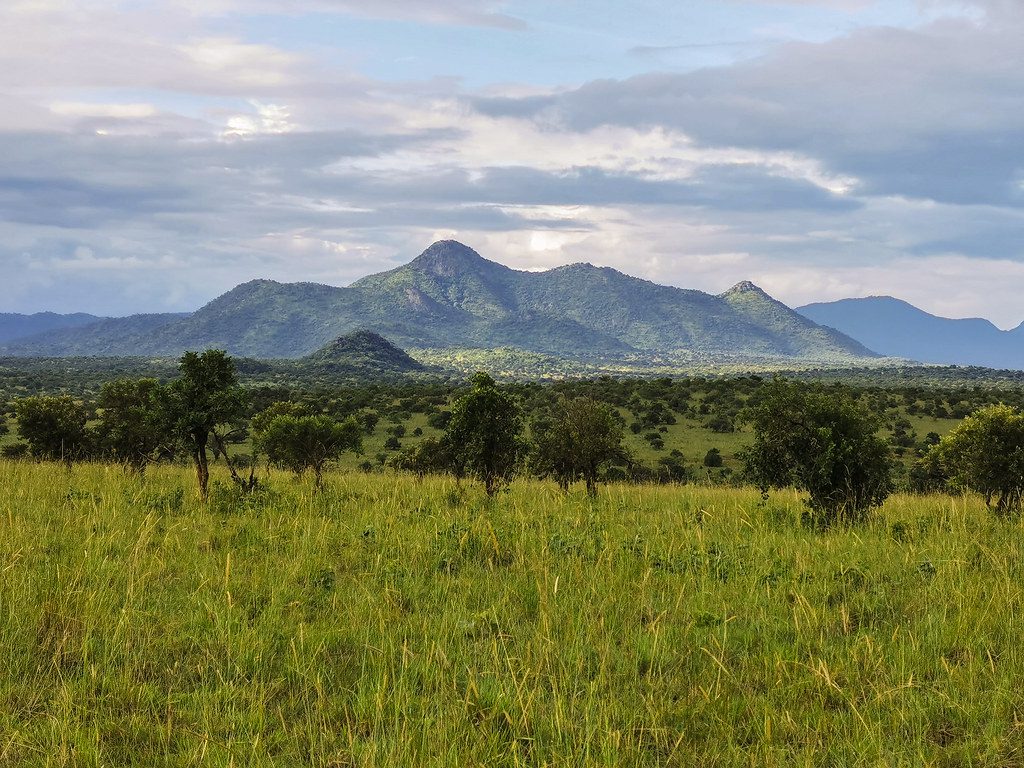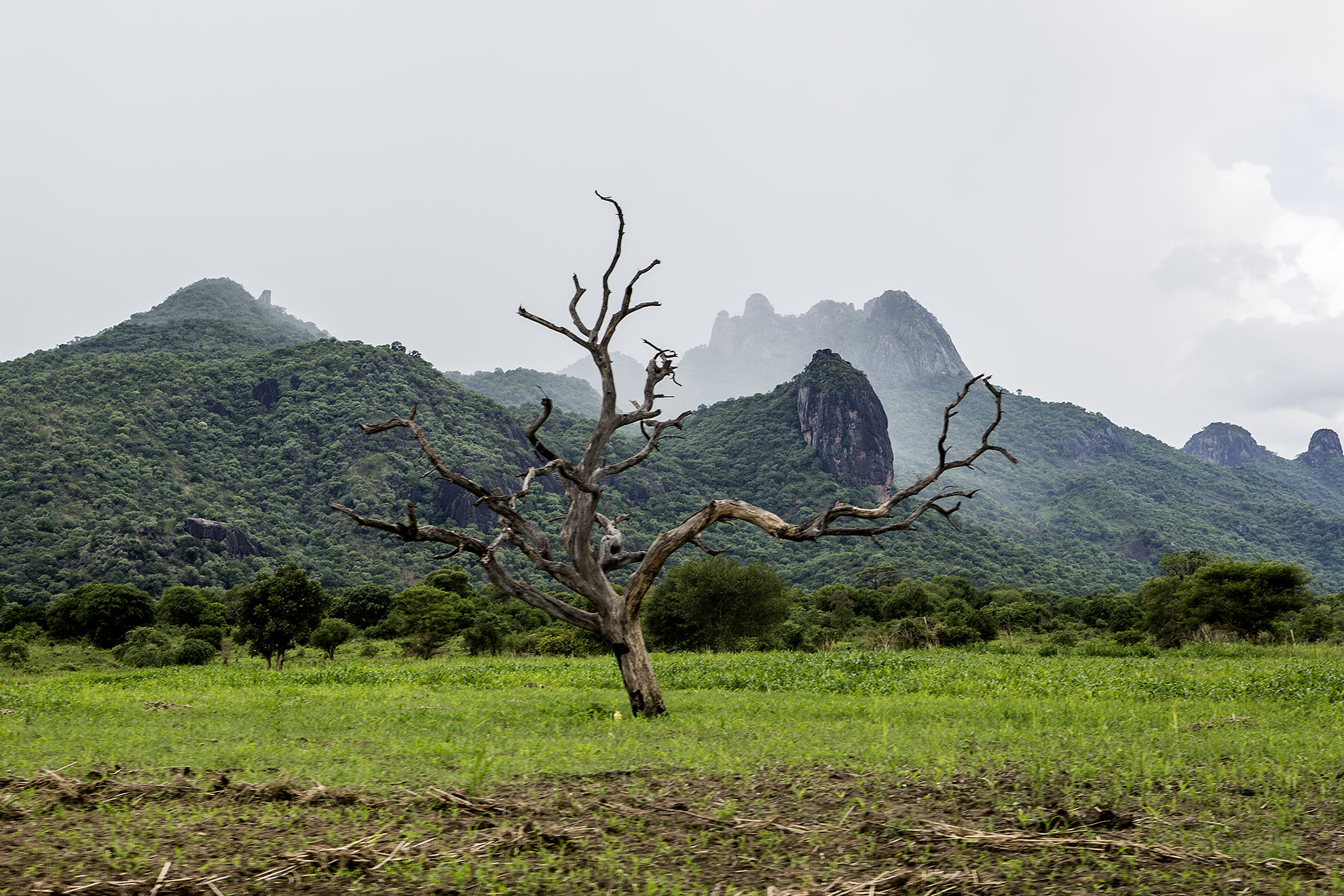Trekking the Imatong Mountains: South Sudan’s Hidden Highland Jewel

Introduction
Overview of Imatong Mountains
The Imatong Mountains, located in the Eastern Equatoria region of South Sudan, stand as a magnificent range that enchants visitors with its rugged beauty and diverse ecosystems. Stretching for approximately 300 kilometres, these mountains reach elevations of over 3,000 metres, featuring the highest peak, Mount Kinyeti. This stunning landscape serves as a vital watershed for the locals, contributing to the rivers and streams that flow down to the surrounding plains.
Key features of the Imatong Mountains include:
- Diverse Flora and Fauna: The range hosts unique species, some of which are endemic to this region.
- Rich Cultural Heritage: Home to indigenous communities, the mountains are steeped in traditions and local customs.
Significance of South Sudan's Landscape
South Sudan's landscapes, including the Imatong Mountains, are not only vital for biodiversity but also play a crucial role in the social and economic fabric of the country. The contrasting terrain—spanning from savannahs to mountains—provides resources for agriculture, pastoralism, and tourism.
This unique combination of natural beauty and cultural significance makes the Imatong Mountains an essential destination for those looking to explore South Sudan's authentic offerings.
The allure of the Imatong Mountains
Biodiversity and Unique Flora
The Imatong Mountains are renowned for their extraordinary biodiversity, making them a vital ecological treasure in South Sudan. Nestled within the lush landscapes, visitors can marvel at a rich variety of plant life, including endemic species like the giant lobelia and unique ferns that thrive at higher altitudes.
Key points highlighting this biodiversity include:
- Floral Diversity: Over 1,000 species of plants have been identified, many of which exist only in this mountain range.
- Wildlife Habitat: These mountains are a refuge for various animals, such as the endangered mountain nyala and numerous bird species, including the captivating African fish eagle.
Indigenous Communities and Culture
Among the peaks and valleys are Indigenous communities that have lived in harmony with this stunning environment for generations. These groups maintain rich cultural traditions, including unique art forms, music, and dance. Visitors can engage with locals to learn about their customs, which often revolve around agriculture and livestock herding.
Highlights of their culture include:
- Traditional Practices: Many still practice subsistence farming and rely on the mountains' resources for their livelihoods.
- Cultural Events: Festivals and gatherings provide insight into their vibrant social life, characterised by elaborate ceremonies and communal storytelling.
This thriving biodiversity, combined with the deep-rooted cultural heritage, makes the Imatong Mountains an enchanting destination for exploration and understanding.
Planning your Trek
Preparing for Altitude and Weather
Embarking on a trek through the Imatong Mountains requires thoughtful preparation to ensure a safe and enjoyable experience. The altitude can be challenging, with peaks reaching over 3,000 metres. It's essential to acclimatise gradually to avoid altitude sickness. Here are some key tips to consider:
- Gradual Ascend: Take your time ascending, allowing your body to adjust to the elevation changes.
- Stay Hydrated: Drinking plenty of water at higher altitudes helps counter dehydration.
- Layered Clothing: Weather can be unpredictable, with temperatures varying significantly. Pack breathable layers, including:
- Base layer for moisture-wicking
- Insulating mid-layer for warmth
- Waterproof outer layer for protection against rain and wind
Necessary Permits and Regulations
Before setting out, understanding the necessary permits and regulations is crucial. The Imatong Mountains are a protected area, and trekkers must obtain the following:
- Trekking Permits: These are often available from local authorities or through tour operators.
- Local Guide Requirement: Regulations may require trekkers to be accompanied by a local guide to ensure safety and respect for cultural practices.
Familiarising oneself with these guidelines not only enhances the trekking experience but also helps to preserve the stunning landscapes and cultural heritage of the Imatong Mountains.

Trekking Trails and Routes
Popular Routes and Difficulty Levels
The Imatong Mountains boast a variety of trekking trails that cater to different skill levels, ensuring that every adventurer can find a suitable path. The most popular routes include:
- Mount Kinyeti Trail: This is the highest peak and a must-do for experienced trekkers, featuring steep inclines and rocky terrains that require good fitness and stamina.
- The Boma Hills Base Trek: Best suited for beginners and those seeking a less strenuous adventure, this trail offers a gentle ascent and stunning views without the extreme altitude.
- Nyangar Trail: This medium-difficulty route combines beautiful landscapes with moderate challenges, ideal for trekkers looking to enjoy both scenery and physical activity.
Scenic Views and Wildlife Encounters
As one trek through the Imatong Mountains, breathtaking views unfold at every turn. Hikers are rewarded with panoramic vistas of rolling hills and lush valleys. Wildlife encounters also enhance the experience:
- Endemic Species: Keep an eye out for the mountain nyala and various bird species that thrive in these habitats.
- Flora Diversity: Flowering plants and unique ecosystems make for stunning photographic opportunities.
Each route offers a blend of challenging terrains and tranquil moments, creating a trekking experience that leaves a lasting impression on every explorer.
Etiquette and Responsible Trekking
Leave No Trace Principles
Venturing into the stunning landscapes of the Imatong Mountains comes with a responsibility to protect the environment. Adhering to the Leave No Trace principle is essential to preserving the beauty for future generations. Key practices include:
- Plan Ahead: Know the trails and weather conditions before heading out.
- Dispose of Waste Properly: Carry out what you carry in, including all food waste and litter.
- Respect Wildlife: Observe animals from a distance, avoiding interference with their natural behaviours.
These simple guidelines contribute to maintaining the pristine nature of the mountains while ensuring a more enjoyable trekking experience.
Respecting Local Customs and Traditions
Engaging with local communities is one of the highlights of trekking in this region. However, it's vital to respect their customs and traditions. Consider these tips:
- Ask Before Taking Photos: Always seek permission before photographing individuals or their properties.
- Participate in Local Practices: Joining in traditional ceremonies or gatherings provides a rich cultural experience, showcasing respect for their heritage.
By embracing these aspects of etiquette and responsibility, trekkers contribute positively to the environments and communities they encounter, creating meaningful experiences for all involved.
Safety Measures and Emergency Preparedness
First Aid Essentials
When embarking on a trek in the Imatong Mountains, being prepared for potential injuries or health issues is vital. Packing a comprehensive first aid kit can make a significant difference during emergencies. Important items to include are:
- Adhesive Bandages: For cuts and scrapes.
- Antiseptic Wipes: To clean wounds and prevent infection.
- Pain Relievers: Ibuprofen or paracetamol can help ease discomfort.
- Altitude Sickness Medication: Consult a healthcare provider for recommendations, as altitude sickness can affect many trekkers.
- Insect Repellent and Sunscreen: Protect against bites and sunburn, especially at higher altitudes.
Communication and Emergency Contacts
Having a reliable communication plan is crucial while trekking in remote areas. Mobile service may be limited; therefore, consider these tips:
- Inform Someone of Your Itinerary: Always let a friend or family member know your plans and expected return time.
- Local Emergency Numbers: Familiarise yourself with local emergency contact numbers, such as search and rescue services.
- Travel with a Guide: Experienced local guides not only enhance your trekking experience but are also knowledgeable about safety protocols and emergency contacts.
By prioritising safety measures and emergency preparedness, trekkers can enjoy their adventure in the Imatong Mountains with confidence, ready to handle any unforeseen situations.
Accommodation and Camping Options
Lodging Facilities in Surrounding Areas
When planning a trek in the Imatong Mountains, finding suitable accommodation can enhance the journey. While pristine wilderness surrounds the mountains, several local lodges and guesthouses cater to various budgets. Some recommended options include:
- Local Guesthouses: Offering basic amenities and genuine hospitality, these are perfect for trekkers seeking an authentic experience.
- Eco-Lodges: For those looking to minimise their environmental impact, eco-lodges provide sustainable lodging options while promoting conservation.
- Campsites: Some established campsites near trekking routes allow for a convenient and immersive outdoor experience.
These facilities not only offer comfortable resting spots but also allow visitors to engage with local culture and cuisine.
Camping Regulations and Guidelines
For those opting to camp under the stars, understanding the regulations is essential. Key guidelines include:
- Designated Campsites: Always camp in pre-approved sites to minimise impact on the delicate ecosystem.
- Fires: Check local regulations regarding campfires, as many areas prohibit them to prevent wildfires.
- Wildlife Precautions: Store food securely and away from sleeping areas to avoid attracting wildlife.
By adhering to these regulations and guidelines, trekkers can enjoy a responsible and enriching camping experience in the stunning Imatong Mountains.
Cuisine and Local Delicacies
Traditional Foods to Try
Exploring the Imatong Mountains offers not only breathtaking views but also a palette of flavours waiting to be discovered. The local cuisine is deeply rooted in tradition, featuring unique dishes that reflect the cultural heritage of the region. Some traditional foods to try include:
- Aloo: A staple made from maize flour, typically served with vegetable stews or meats.
- Githeri: A hearty mix of maize and beans, often spiced to add zest.
- Nsima: Another maize-based dish, similar to polenta, served alongside various sauces or grilled meats.
Sampling these local delights enhances the trekking experience, allowing visitors to indulge in the region’s rich culinary landscape.
Hydration and Nutrition Tips for Trekking
Staying hydrated and nourished while trekking is paramount. Here are some essential tips to maintain energy levels:
- Drink Regularly: Carry enough water and drink steadily throughout the trek. Aim for at least 2-3 litres per day.
- Pack Nutritious Snacks: Energy-dense snacks such as nuts, dried fruits, and energy bars can provide quick boosts between meals.
- Balance Meals: When possible, include a mix of carbohydrates, proteins, and fats in meals to sustain energy levels during long hikes.
By enjoying local delicacies and staying properly nourished, adventurers can make the most of their trekking experience in the Imatong Mountains.
Immersing in the Local Experience
Interaction with Residents
Engaging with the local communities while trekking in the Imatong Mountains adds a profound dimension to the journey. The warmth and hospitality of the residents create an inviting atmosphere, making interactions memorable. Visitors often find joy in:
- Participating in Daily Activities: Join locals in their daily routines, whether it's farming or cooking traditional meals, offering an authentic glimpse into their lives.
- Learning Local Languages: A few words in the native dialect can go a long way in forging connections and showing respect for their culture.
These interactions not only enrich the experience but also foster mutual respect and understanding.
Unique Cultural Experiences
The Imatong Mountains are steeped in rich traditions and customs that can add depth to any visit. Some unique cultural experiences include:
- Traditional Music and Dance: Participate in local celebrations featuring lively performances that showcase the region's vibrant culture.
- Art and Craft Workshops: Engage in workshops that highlight traditional crafts such as weaving or pottery, allowing for a hands-on experience of local artistry.
By immersing in these cultural experiences, trekkers gain a greater appreciation for the region's heritage, making their adventure in the Imatong Mountains truly unforgettable.
Preservation Efforts and Conservation Projects
Conservation Initiatives in Imatong Mountains
The Imatong Mountains are not just a stunning destination; they are also a vital ecological reserve that requires ongoing preservation efforts. Various conservation initiatives are in place to safeguard the area’s unique biodiversity and cultural heritage. Key projects include:
- Habitat Restoration: Efforts focused on reforestation and restoring natural habitats help combat deforestation and protect local wildlife.
- Community-Led Conservation: Engaging local communities in conservation practices ensures that the benefits of protecting the environment are felt by those who depend on it.
These initiatives work in tandem to create a sustainable balance between tourism and ecological preservation, ensuring that the beauty of the Imatong Mountains remains intact for future generations.
Ways to Contribute to Sustainability
Visiting the Imatong Mountains provides an opportunity to contribute to conservation efforts. Here are effective ways to help:
- Support Local Businesses: Choose to stay at eco-lodges and purchase handicrafts from local artisans to invest directly in the community.
- Participate in Clean-Up Drives: Join organised efforts to clean up trails and campsites, promoting a healthier environment.
- Educate Others: Share your knowledge about the importance of conservation and sustainability after your visit, spreading awareness to further protect these unique landscapes.
By engaging in these activities, trekkers can play an integral role in preserving the natural beauty and cultural richness of the Imatong Mountains while enjoying their adventure.
Capturing Memories: Photography Tips
Must-Visit Photography Spots
The Imatong Mountains provide a breathtaking backdrop for any photographer. To ensure that you capture the essence of this stunning landscape, be sure to visit these must-see spots:
- Mount Kinyeti Peak: The highest point offers panoramic views that are perfect for sweeping landscape shots, especially during sunrise and sunset.
- Ngomoromo Waterfall: Capturing the cascading water against the lush green foliage makes for a striking contrast in your photographs.
- Local Villages: The charming architecture and vibrant community life provide countless opportunities for candid shots that showcase the culture and traditions of the local residents.
Make sure to take your time at each location to find the perfect angle and light.
Equipment Recommendations and Techniques
To make the most of your photography adventure, consider these equipment tips and techniques:
- Camera Gear: A DSLR or mirrorless camera with a variety of lenses will enhance your ability to capture diverse subjects. A sturdy tripod is invaluable for low-light settings, especially during sunrise or sunset.
- Editing Software: Post-processing can elevate your images. Software such as Lightroom or Photoshop allows for adjustments that can really bring your shots to life.
Utilising these tips ensures that every memorable moment in the Imatong Mountains is beautifully preserved, allowing you to cherish your adventure for years to come.
Conclusion and Reflection
Highlights of Trekking Experience
Trekking through the Imatong Mountains offers an unforgettable blend of natural beauty, cultural immersion, and personal challenge. Highlights of this adventure often include:
- Stunning Scenery: The diverse landscapes, from lush valleys to rugged peaks, provide breathtaking views at every turn, perfect for nature lovers and photographers alike.
- Cultural Engagement: Interacting with local communities enriches the experience, providing insights into their traditions, art, and way of life.
- Biodiversity Encounters: Witnessing unique flora and fauna first-hand is a reminder of the area’s ecological significance and the importance of conservation.
Impact of Imatong Mountains Exploration
Exploring the Imatong Mountains not only leaves trekkers with lasting memories but also fosters a deeper appreciation for environmental preservation. Each visit contributes to local economies through sustainable tourism, encouraging communities to engage in conservation efforts.
As visitors share their experiences and knowledge, they play a vital role in raising awareness about the beauty and importance of preserving this unique landscape. In essence, trekking in the Imatong Mountains is about more than just adventure; it is a journey of connection, education, and responsibility.
